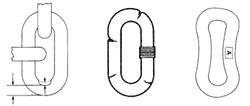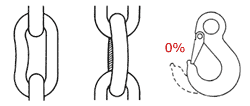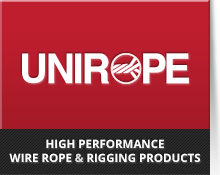Inspection
- Daily check: visible faults in links or hooks.
- At least twice a year:
• Clean slings prior to inspection.
• Hang the chain sling up or stretch the sling out on a level floor. Remove all twists. Measure the length. Discard if sling has been stretched.
• Make a link-by-link inspection.
- At least once a year:
We recommend to have the chain sling proof tested to twice the WLL and re-certified by Unirope.
- It is important to inspect chain slings and to keep a record of individual chain inspections. The Unirope Sling Inspection Service takes care of this.
- Remove from service if you detect:
• Missing or illegible capacity tags;
• cracks or breaks, wear, nicks, gouges;
• stretched chain links or components;
• bent, twisted or deformed chain links or components;
• evidence of heat damage, weld splatter;
• pitting or corrosion;
• lack of ability to hinge freely;
• 13% or more wear on any point on a link (for exact values refer to ASME B30.9).
WE RECOMMEND TO FOLLOW ANSI B30.9 IN ITS LATEST VERSION.
Remove from service if you detect:
 |
| 13% Wear |
Nicks, Cracks |
Stretch |
 |
| Twisted Links, Deformed Hardware |
About the importance of sling inspections








